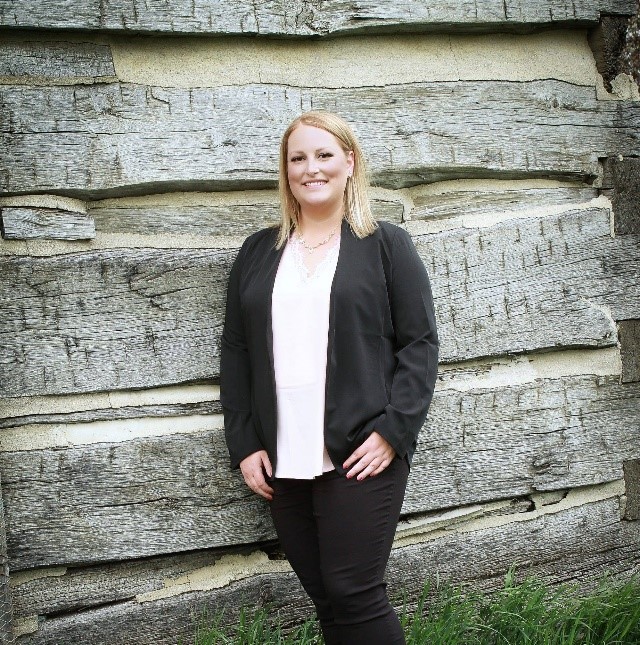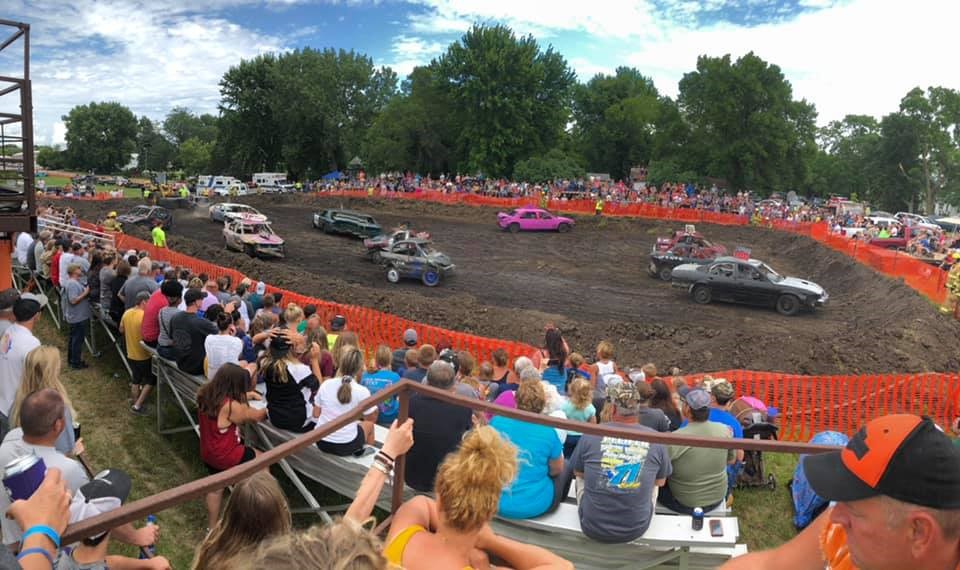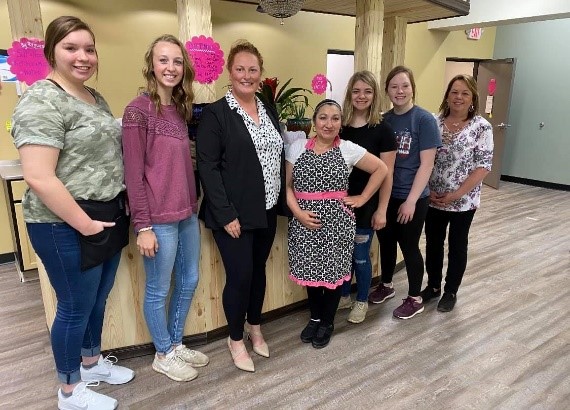This is the second post of series in which we ask community leaders about the community they live in and share their answers with you. We read what their favorite spaces are in the city and why and what issues their city faces from their point of view. Our goal is to get a sense of South Dakota and the cities that make it up. We hope to have a variety of cities and perspectives of the same cities. By engaging community leaders, designers and communities can see the spaces in a city from a different point of view: the people that are making decisions and representing you.
Today, we take a look at White, SD in Brookings county. A city with an estimated population of 485 (2010 Census). Established in 1884, White is named in honor of W.H. White, an early settler.
A Great Place to Call Home
by Aspen Thortensen, Mayor of White
The City of White, SD is often referred to as a bedroom community with just a short 12-minute commute to Brookings, SD. Our family was drawn to White for the affordable housing market and the city’s relative location. However, our love of the City of White did not come from these logical drivers, but from its community, events, and people. You won’t find big box stores, chain restaurants, or heavy traffic in White, SD – instead you are greeted by its small-town caring community; an annual summer celebration called Pioneer Days that draws visitors from miles away to sample cook-off chili and down-home events; and the Deubrook School District that offers an impressive 9:1 student teacher ratio. The City of White is a place where you are always welcome to join in, people stop in the middle of the road to chat with friends, and there is no place where a person does not belong. Living in the City of White is like having a large family – sometimes it is fun, sometimes it is challenging – but it is always worth the stay.
Source: Pioneer Day Committee
There is a simplicity of the small-town life that lets you focus on personal values and a lifestyle without heavy traffic or crowds. It is something I often consider while commuting to work. When I enter Sioux Falls, SD, I am one of the 185,000 people, and when I return home, I am a part of the 500. I believe that joy does not come from having something or doing something, but it happens from becoming something – and the City of White has helped me become a better person.
I am thrilled to impact the City of White as the elected Mayor to improve the community I have grown to love. The City of White has twenty-four active businesses providing food to veterinarian services and a whole lot more. Leased space for individuals to bring new businesses to the City of White is very limited. I hope my career path can help provide information to the City of White to help alter this. Not only are architects educated and trained to initiate change, they are also intimately involved in public welfare. With every project and every client, architects use their skills to make communities stronger for the public and their residents. With a view to the future, architects are planners, while often elected officials are forced to be reactive to situations. Elected officials and architects have a linear relationship as leaders in decision making, promoting the highest standards of ethics and integrity, and upholding the duty to protect the health, safety, and welfare of the public. As I become a licensed architect, I do not want to limit the use of my knowledge, skills, and abilities for commercial gain in employment. I ran for office for Mayor of the City of White not for a paycheck or power, but to implement my skills to benefit others and for public service –aligned fundamentally with the ethical decisions encountered daily in the profession of architecture.
Source: White Historical Society & Museum
The City of White has a great community of caring people and the nostalgic feel of a small town, but there is work to be done to restore its built environment and ensure its sustainable future. A quick trip to the City of White, SD Area Historical Society and Museum shows how the city has grown, ebbed, and changed over time. Originally, the City of White was established in 1884 in honor of W.H. White, who had settled in the area and donated land to help establish the local railroad in the area.1 The city has maintained a constant population between 400-500 people since around 1900. Since 1884, the downtown area has gone through phases of change and the loss of many of the historic buildings. The downtown has been developed without context of the previously thriving environment or a master plan to facilitate a wide variety of businesses. Instead, main street now hosts limited establishments, vacant lots, and gravel parking. As the downtown drag has been mis-developed and degraded the history of the City of White, this is where architectural experience and ability to bring a realistic perspective may be applied. I hope to help the community understand plausible improvements, collaborative planning principles, and see what familiarity may have blocked from view. Small steps such as ordinance enforcement, as well as, large scale planning concepts of growth and development will be necessary to create a unified sustainable vision for the City of White.
Other people have recently recognized the potential of the City of White. The former senior living community, the White Care Center, closed its doors in 2015. Revitalization of this facility became a truly collaborate community effort through community participation in open forums and the application of that feedback. The facility was purchased and renovated into a 20,000-square-foot, mixed-use building to provide housing, business locations, and jobs in the City of White. It received the 2019 Build South Dakota Award from the Associated General Contractors and has been a pure collaboration that enhances our city. Renamed, the Farmstead, the center has attracted businesses, cleaned up part of city, and been supported by the citizens. The Farmstead is a primary example of leadership and vision in a small town.
The best part of living in White, SD, is that I can be sure my daughter is growing up with healthy, well-rounded, and safe experiences in a community where everyone looks out for each other – something that is not available in other cities. The community of the City of White has welcomed all of us openly and has made it possible for us to create a simple lifestyle for our family. Anyone can change the built environment but having the right people to support and build a wonderful life with you is the backbone of a strong community. The City of White has great caring people and fundamental relationships – together we will all work towards an even stronger and sustainable future for the City of White and its people.

Aspen Thortenson
Mayor of White and Associate AIA
Aspen Thorstenson was born in Washington State, raised in Kansas, and has established South Dakota as her long-term residence.
Aspen began her career in architecture at JLG Architects in 2015 and is now employed at Stone Group Architects.
In May 2020, Aspen was elected the Mayor of White, SD.
Aspen holds a bachelor’s degree in architecture and a master’s degree in architecture. She married Kory in 2019 and has an eight-year-old daughter. During her free time, she enjoys exploring patisserie shops, traveling with family, and starting new projects.
Footnotes: 1. DRAFT Environmental impact statement, White Wind Farm, Brookings County, SD U.S. DOE….. 2006 Google Books
Are you/do you know of a leader that loves their community? We want to hear from you! Send nominations and contact information to contact@aiasouthdakota.org. Representing Cities We Love is a series that explores the cities in South Dakota from the perspective of the leaders that live there.

AIA South Dakota is the professional non-profit membership association of architects, future architects, and partners in the building and design industries, and the state chapter of the American Institute of Architects (AIA) AIA South Dakota advances the mission that design matters in every South Dakota community.









“Elected officials and architects have a linear relationship as leaders in decision making, promoting the highest standards of ethics and integrity, and upholding the duty to protect the health, safety, and welfare of the public.” Well said! Great article, Madam Mayor!
Thank you Allison, and those who invited me to write.